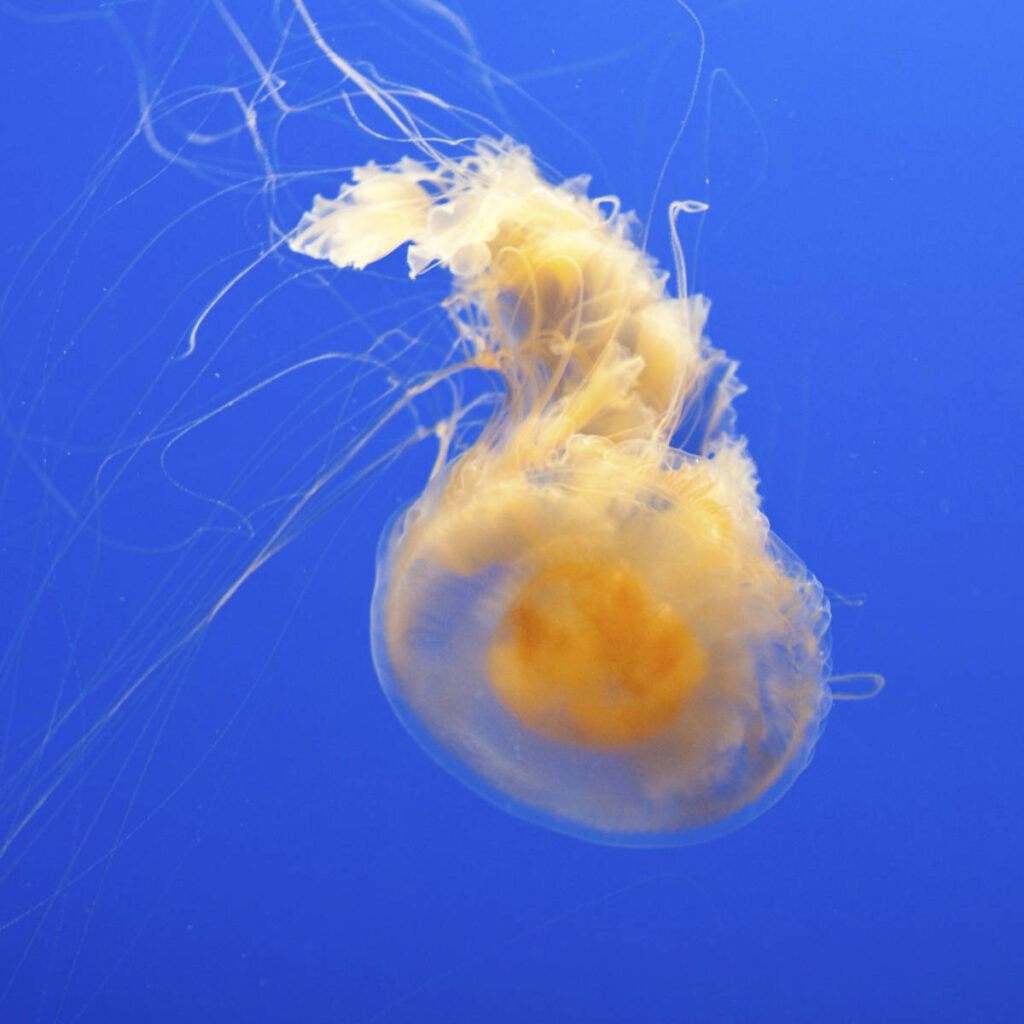Last Reviewed and Updated on August 2, 2022
Explore some of the biggest and largest jellyfish in the world, be it the longest tentacles, heaviest weight, or largest body diameter. Most of these are gentle giants that don’t really pose harm to you, but with some of them, it’s best to stay clear. Let’s take a look at some of these amazing species.
Largest jellyfish in the world
While most jellyfish are tiny, some species reach enormous sizes. Compared to us, some of these jelly species are gigantic. Let’s take a closer look at some of the most spectacular species of jellyfish.
As largest can be defined by the size of the bell, length of the tentacles, as well as the weight of the animal, some species are larger than the other in one aspect while at the same time aren’t necessarily the largest in another.
Love sea jellies? Be sure to read our list of interesting jellyfish facts.
1. Lion’s Mane Jellyfish (Cyanea capillata)
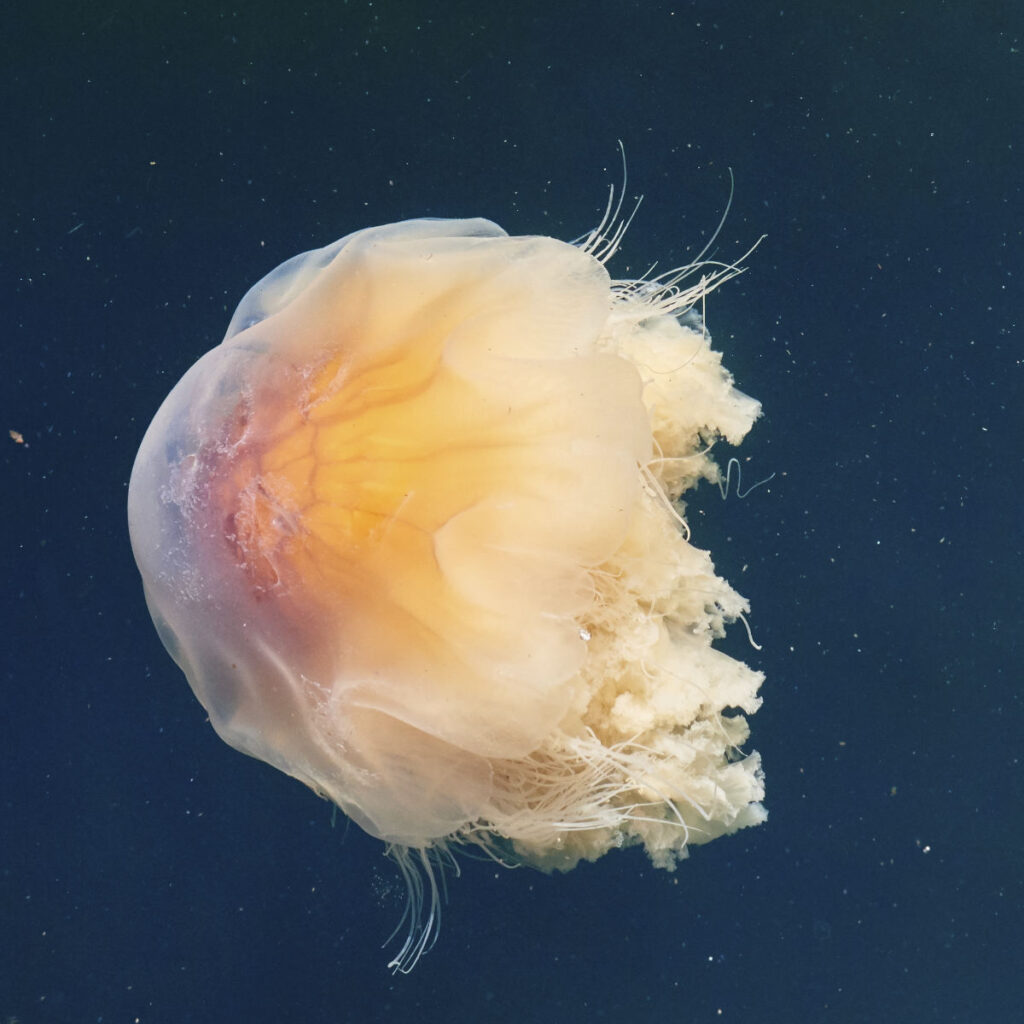
When it comes to jellyfish, the Lion’s Mane Jellyfish is the king (and queen) of them all. This one is one of the known species of jellyfish, with the largest specimen having a bell diameter of 7 feet / 210 centimeters and a tentacle length of whooping 120 feet / 36.6 m long.
There is great size variation in this species, from the before-mentioned sizes to specimens with a bell size of only about 20 inches / 50 cm.
Although these can be frighteningly large, and they do sting, their stings aren’t lethal and not especially painful.
These sea dwellers can be found in cold, boreal waters of the Arctic, northern Atlantic, and northern Pacific oceans.
2. Nomura’s Jellyfish (Nemopilema nomurai)
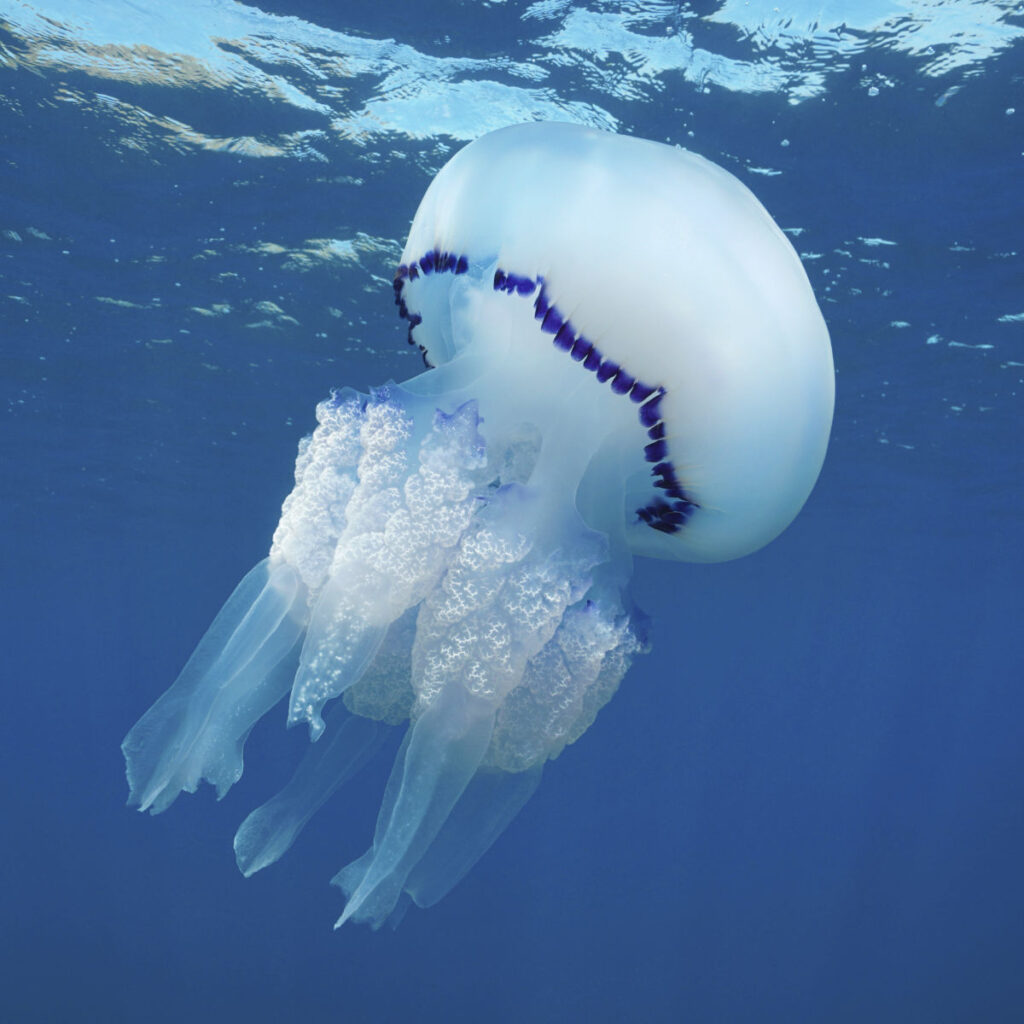
Another giant of the sea is the Nomura’s jellyfish. This jellyfish is pretty much on par with the lion’s mane jellyfish. When fully grown, this jellyfish can grow to a diameter of about 6 ft 7 inches / 2 m and weighs 440 lb / 200 kg. It does have shorter tentacles, though. This is one of the largest jellyfish in the world by weight.
This jellyfish is edible but not really a desirable food source.
It can primarily be found in the waters between China and Japan.
3. Barrel Jellyfish (Rhizostoma pulmo)
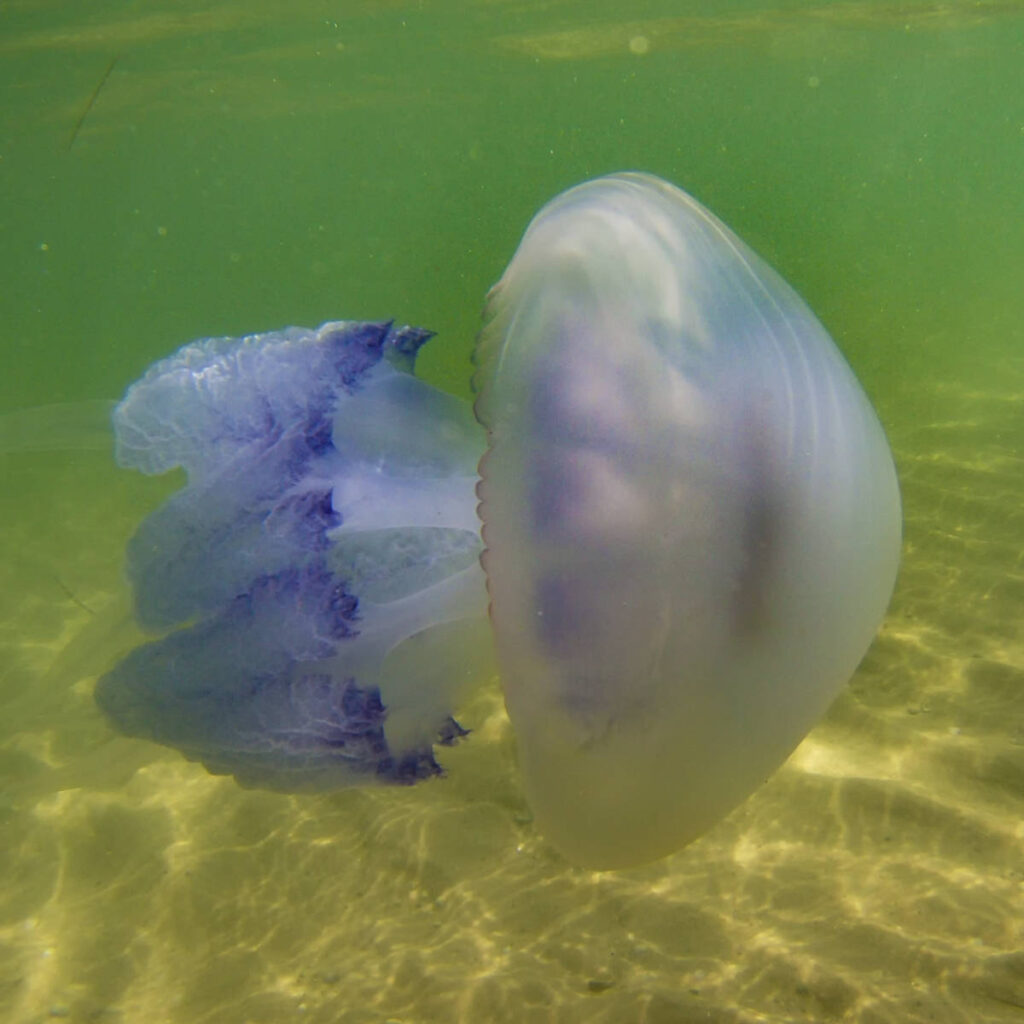
Another giant species is the barrel jellyfish. While most grow to about 16 inches / 40 cm in diameter, they can grow to have a diameter of 59 inches / 150 cm or even larger.
They are the largest jellyfish species in British and Irish waters; two divers encountered a human-sized one.
These sea jellies are moderately venomous but generally aren’t deadly.
You can commonly stumble into one in the northeast Atlantic, Adriatic sea, Mediterranean Sea, Black Sea, Sea of Azov, and the Irish sea.
4. The fried egg jellyfish (Phacellophora camtschatica)
This sea jelly is fairly easy to recognize; as the name suggests, it resembles a fried egg a little. It has a yellow center that resembles an egg yolk, and the center is surrounded by opaque white tissue.
The bell of this animal can have a diameter of 2ft / 60 cm, which isn’t as large as many of the species on this list, but it does have clusters of dozens of tentacles that can each be 20 ft / 6m long.
One fun feature of this species is it lives in a symbiotic relationship with the larval crab. The crab lives on the bell or within the tentacles of the jelly, which provides him with safety and convenient locomotion, and the crab feeds on parasites that would otherwise harm the jelly.
You can find these sea creatures in cool water all around the globe, most commonly in the Northern Pacific.
5. Root-Mouthed Jellyfish (Eupilema inexpectata)
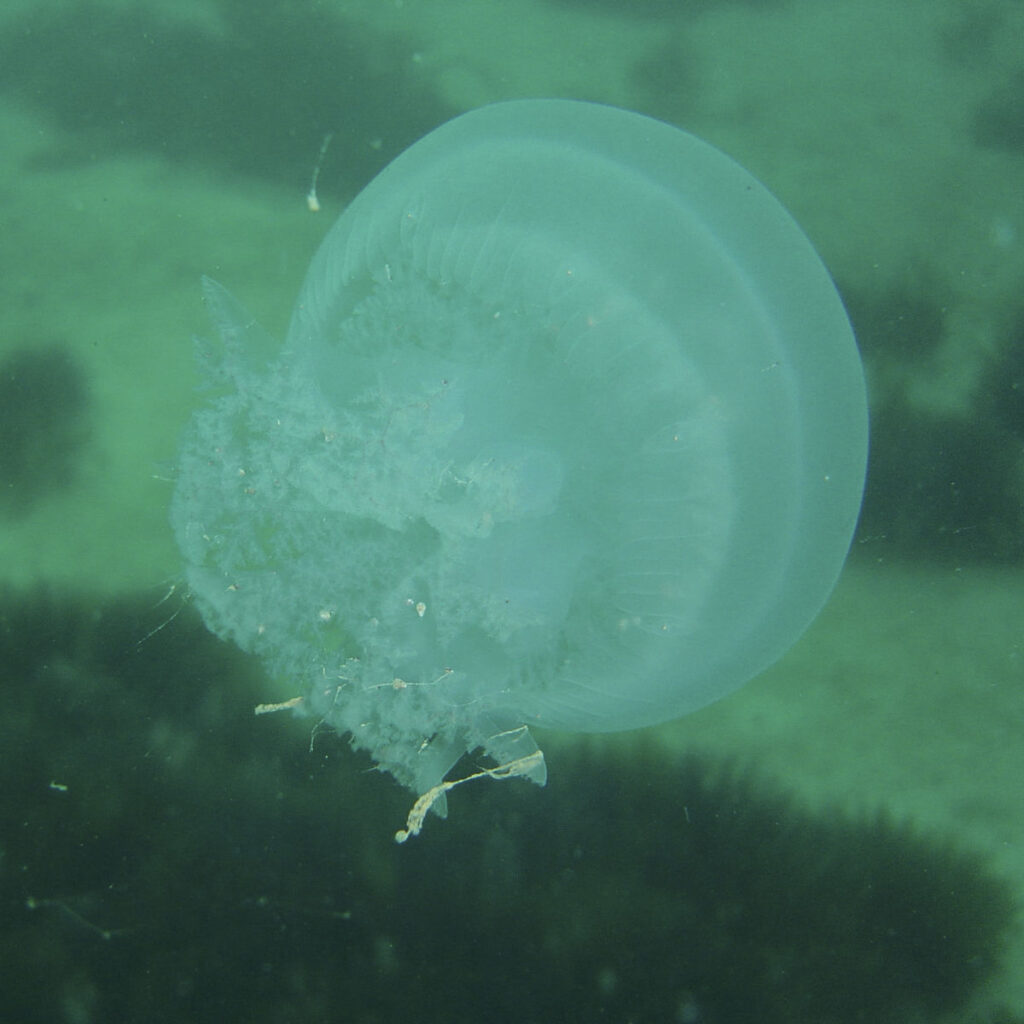
With a bell size of over 3 ft 3 inch / 1 m in diameter, this species is one of the big boys (and girls); it does lack in length, as it has no tentacles.
You can find these around the whole South African coast, usually close to the surface.
6. The black sea nettle (Chrysoara Achlyos)
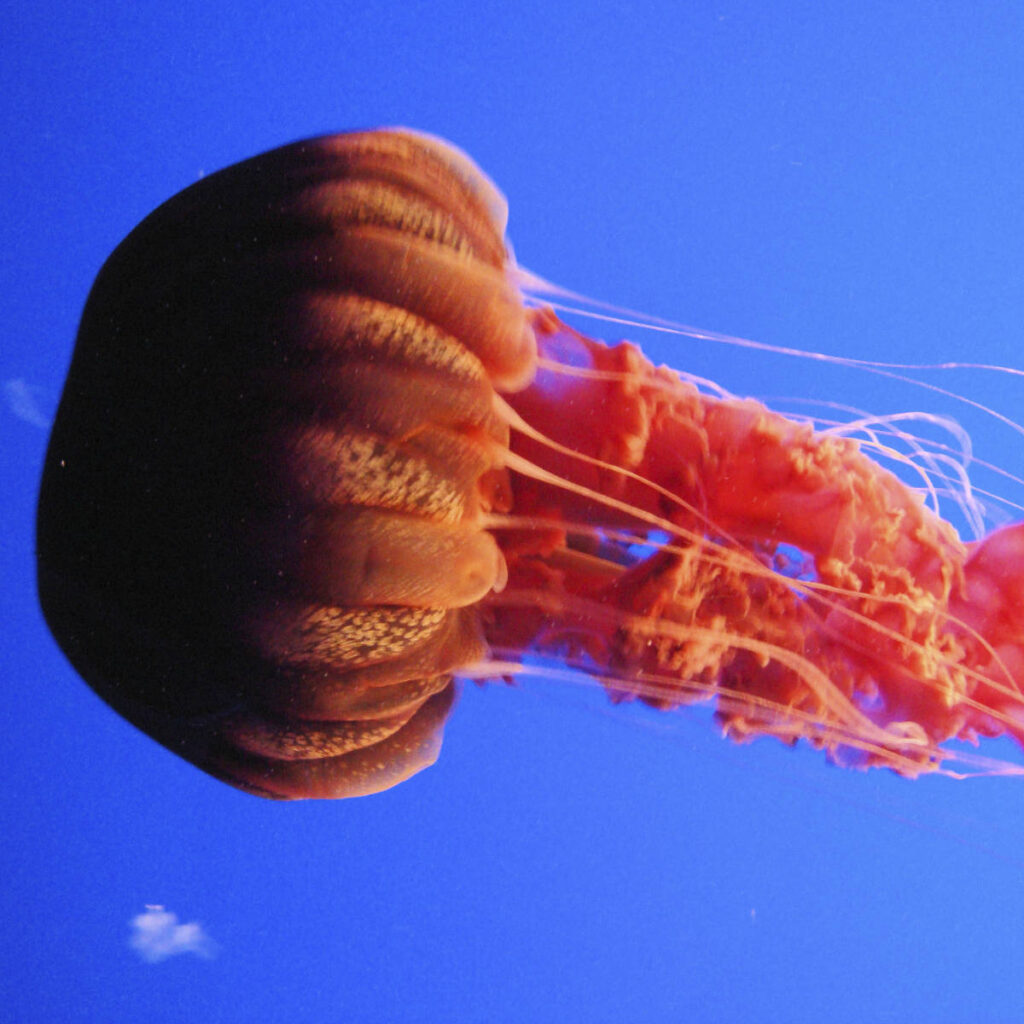
This species of jellyfish can be found in the waters of the Pacific ocean. They can reach massive sizes, with the bell potentially reaching a diameter of up to 3 ft / 1m and the oral arms reaching 16 to 20 ft / 5 or 6 meters.
7. Pacific Sea Nettle (Chrysaora fuscescens)
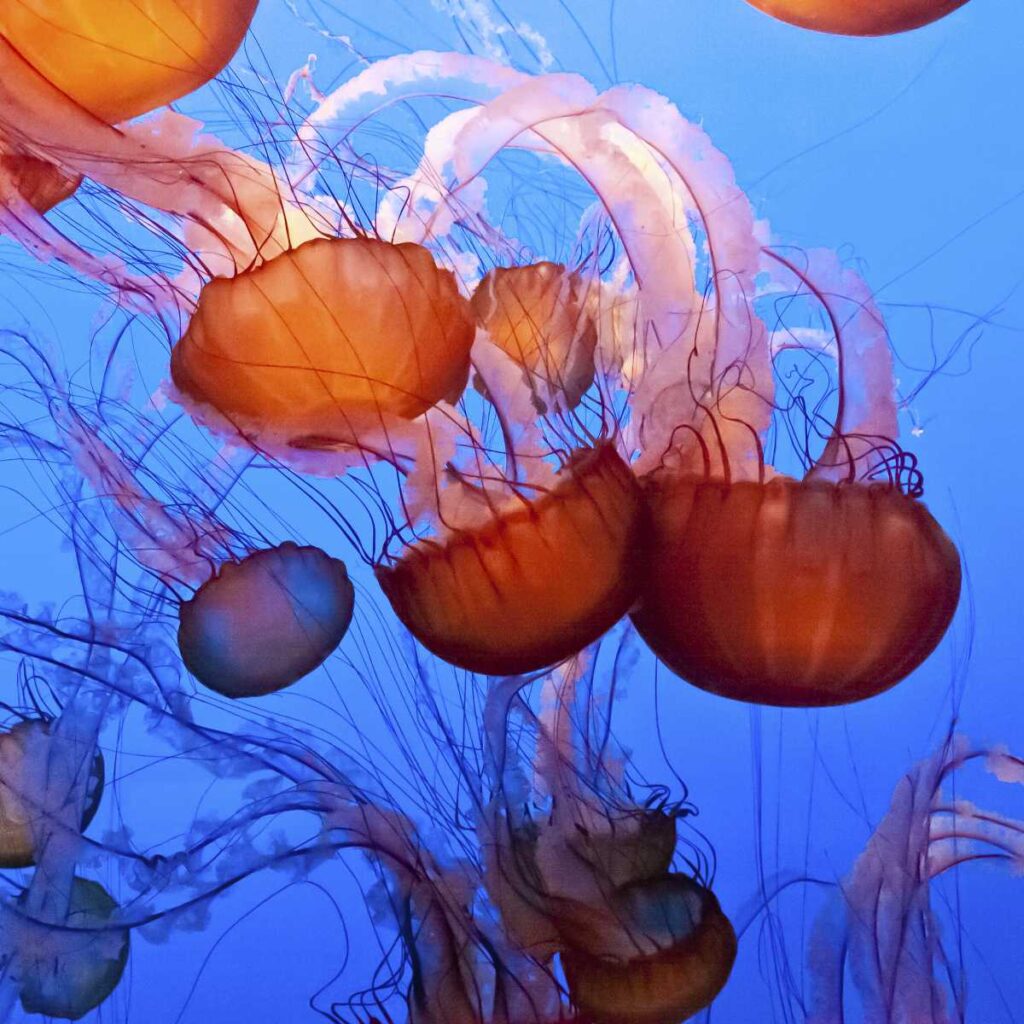
The pacific sea nettle, also known as the West Coast sea nettle, is another impressive species. You can often see these sea dwellers in public aquariums; they are easy to maintain and are brightly colored, which makes them pretty popular. In captivity, they don’t grow as big as they can in the wild. In the wild, their bell can be larger than 3 feet / 1 meter, with the oral arms trailing behind reaching 15 feet / 4.6 meters.
Some other species of sea nettles can reach similar sizes.
8. Australian box jelly (Chironex fleckeri)

Australian box jelly is the largest box jellyfish, also known as the sea wasp. Unlike most on this list of largest jellyfish in the world, this one is extremely dangerous. Not only is it venomous, but it also has a very transparent body, so it is hard to see.
The body of the jellyfish isn’t all that big; it can be about the size of a basketball, but, when extended, its tentacles can reach 10 ft / 3 m.
As the name suggests, these creatures can be found in coastal waters from northern Australia and New Guinea all the way to Malaysia, the Philippines, and Vietnam.
9. Pink Meanie (Drymonema larsoni)
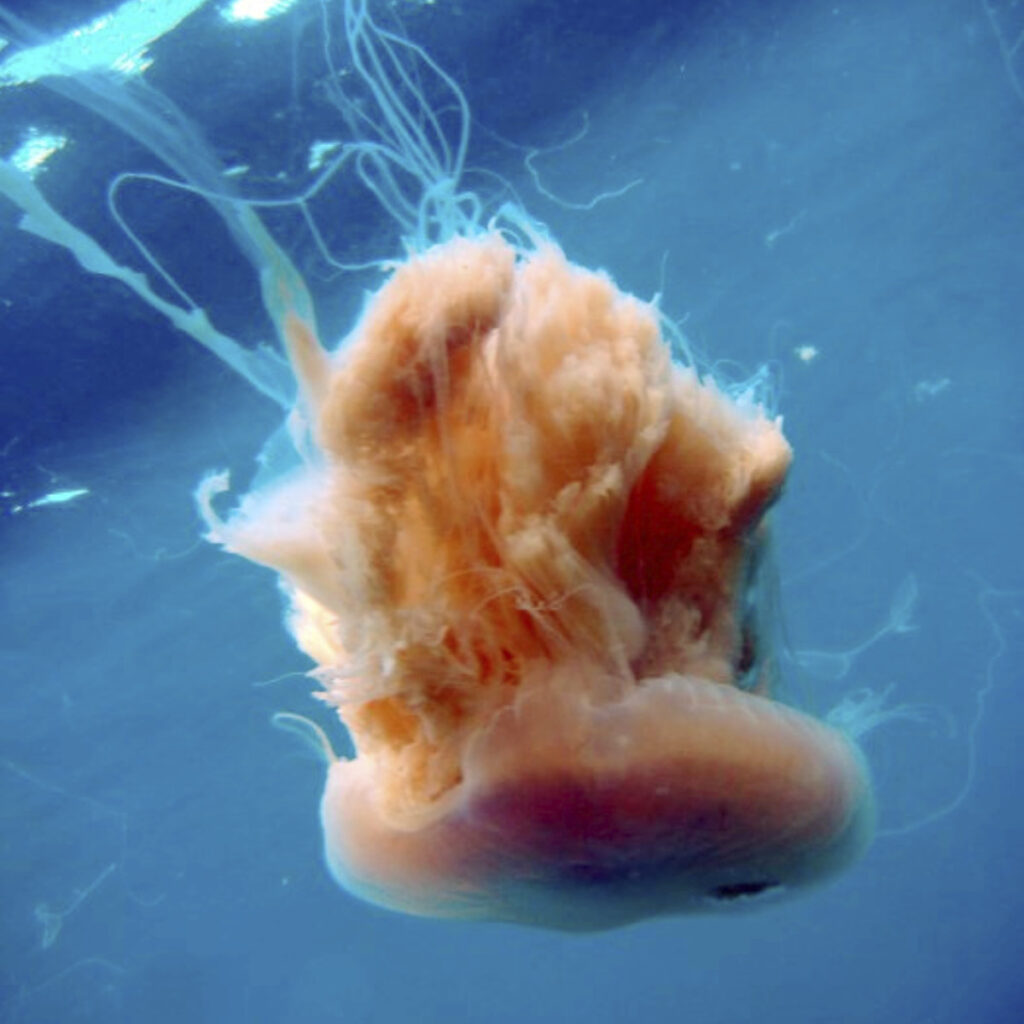
Pink meanie is another fairly bulky species of jellyfish. They can reach a length of about the size of a human.
10. Giant Phantom Jelly (Stygiomedusa Gigantea)
Last on our list is a mysterious entry but a good contender for the largest jellyfish in the world. The giant phantom jelly may as well be the largest jellyfish of them all, but we just don’t know that for sure. The species has been known for over 100 years, and in all this time, it was observed just about 100 times. The sightings are very rare, but it is believed it’s actually a numerous and widespread species. Wondering why it’s such a rare sight? This species can be found in the ocean’s midnight zone, which means you need to be about 20,000 feet / 6500 deep to see one.
The bell is about 3.3 ft / 1 m in diameter, and it can stretch to the size of up to 5 times more. It has four arms which are about 33 ft / 10 m in length.

